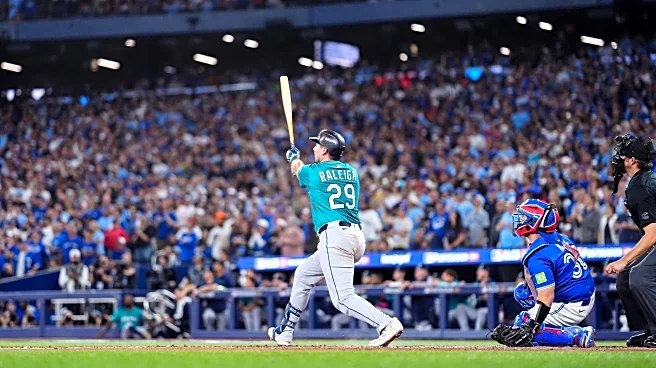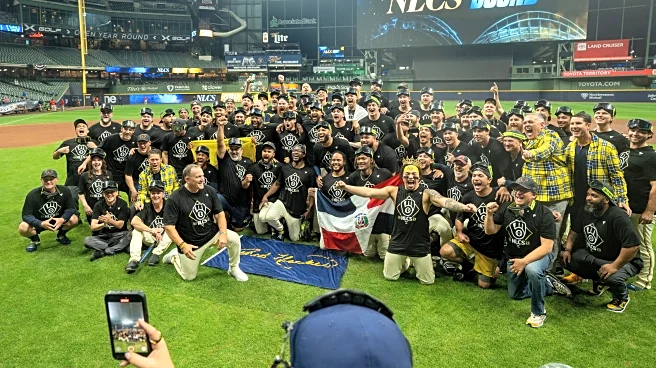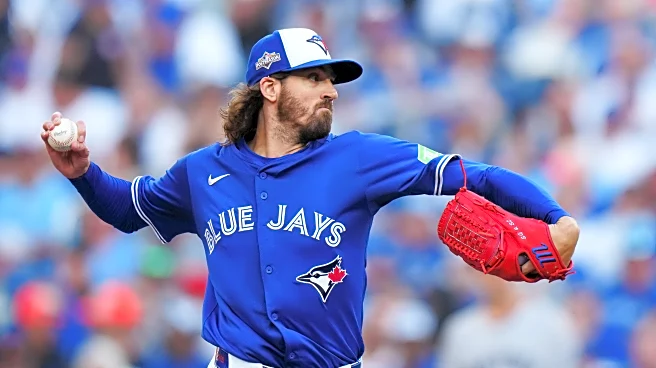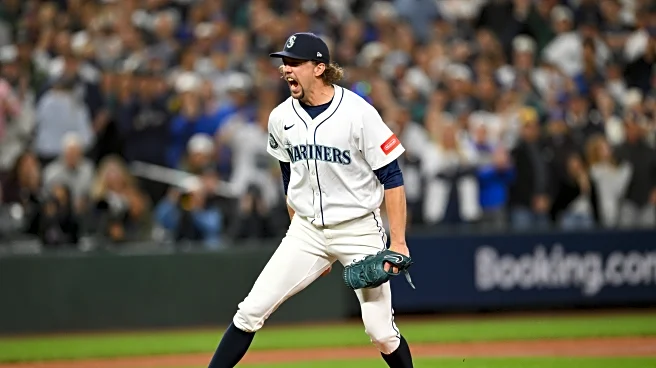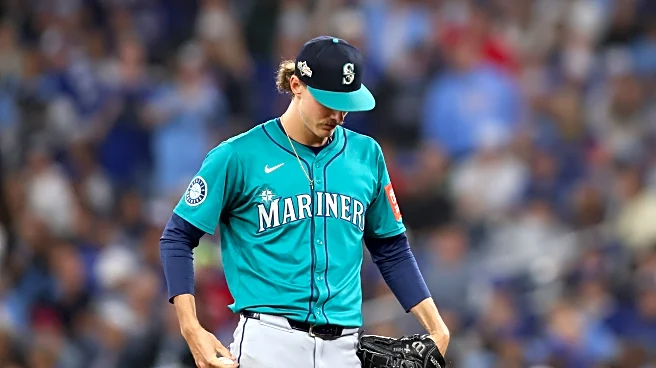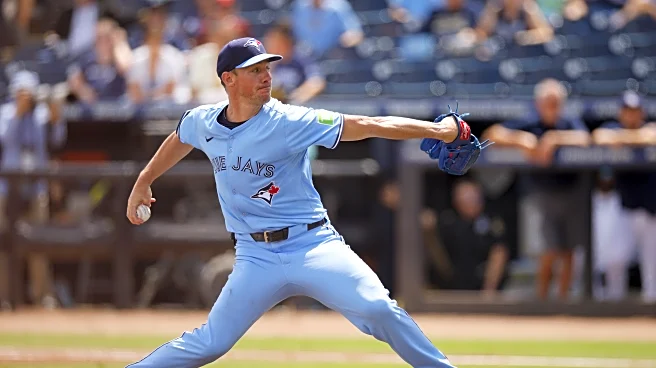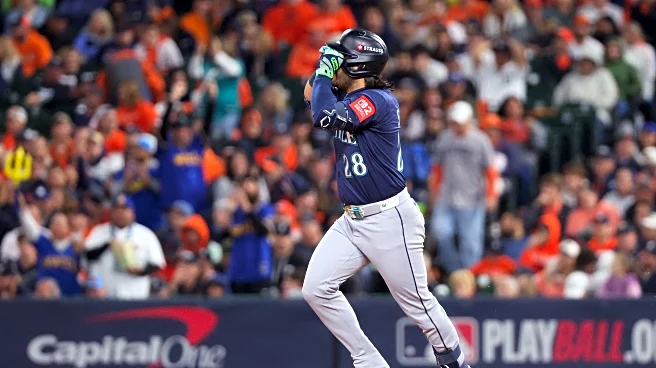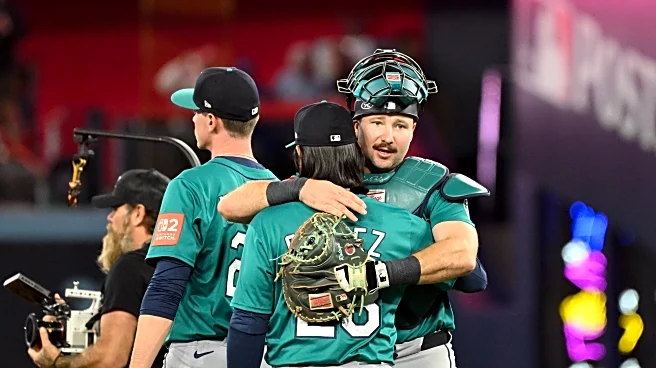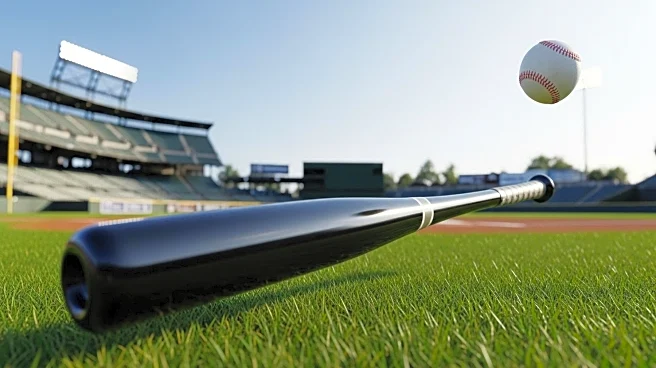A common sentiment this postseason has been that the Seattle Mariners didn’t load up enough on relief pitching. That they were one reliever short of being able to grind through a few rounds. Gabe Speier?
He was one of the best. Matt Brash? He can be one of the best. Andrés Muñoz? He’s the best of the bunch. Eduard Bazardo? Eduard Bazardo! If you’ve tuned into more of the Mariners’ playoff games, you could say that he’s come out of nowhere to play a key role in the Mariners’ pen. But if you were watching before that, you’d know that this is who Bazardo has been for a while.
Here’s some proof! Bazardo, by percentile, in a couple key metrics in 2025:
- IP: 96th percentile
- WPA: 87th percentile
- xERA: 76th percentile
- K-BB%: 64th percentile
Bazardo has given his team more bulk than 96% of relief pitchers. He’s added more win probability than 87% of relief pitchers. His expected ERA says he’s been better than 76% of relief pitchers! Only five relievers have thrown more innings than him, and though that’s, in part, due to him entering games in lower leverage situations more often than not, he added more win probability than most regardless. These are all metrics that we care about, and they all paint Bazardo as a very good, and perhaps very underrated pitcher.
And yet! The version of Bazardo at the beginning of the year is not at all like the one that’s dominated at the end of the year. Here’s Bazardo’s pitch mix, from July 2023 through May 2025:

By pitch mix, Bazardo smells a whole lot like your typical Mariner. Mostly breaking pitches, and an even mix of four- and two-seam fastballs. That usually works plenty well, and you could argue that, for Bazardo, it did. But if you think about his repertoire, he’s got a huge curveball, with a lot of depth, and a lot of sweep. You could look at it in terms of pitch traits, which means you’ll want a pitch that mirrors it well, which means something that moves more side-to-side. Given that Bazardo’s curveball’s actual spin direction is towards 8:15 on a clock, a perfectly mirrored fastball’s actual spin direction would be 2:15. His four-seam fastball? 1:00. But his two-seamer? 2:00. Much closer, which means it’s much better at mimicking the spin of his curveball, but it spins almost exactly in the opposite direction which, it turns out, is good.
The other thing you could do is just…look at the pitch results. Here’s a not uncommon result for Bazardo’s four-seam fastball:
Like just about every home run, Bazardo doesn’t hit his spot, and Matt Chapman wallops it into the stands. Pitch mirroring aside, Bazardo’s four-seam fastball is neither steep nor flat, and it doesn’t cut a ton, but it doesn’t run too much either. It’s a relatively generic fastball, which is why, when he throws it, hitters have the isolated power of Cal Raleigh. Like, this year’s Cal Raleigh.
So, Bazardo made the obvious tweak. He faded the four-seamer. Here’s his pitch mix again, but including the rest of his 2025:

Save for the literal one or two or three four-seamers a month, Bazardo ain’t throwing it anymore. Even more, he’s found his two-seamer to be a helluva weapon, so much so that he’s throwing it about two-thirds of the time, whereas he previously would throw it about a fifth of the time.
Recall the final postseason game against the Tigers.
The commentators could not shut up about how George Kirby was throwing his slider half of the time. And then they really couldn’t shut the hell up when Logan Gilbert came in and his slider and splitter accounted for 85% of his pitches. They did this because, if nothing else, the Tigers can hit the fastball. So they stayed away from the fastball. And then there’s Bazardo. He was basically the only pitcher in the game to prominently feature his fastball, throwing it 69% of the time over 2.2 innings, with just one hit and walk each, and four punchouts. Turns out, the curveball and two-seam are a special combination.
Here’s how Bazardo uses them to dispatch Javy Báez in Game 3. He starts him off with a two-seamer, down and away:
He goes to the two-seamer again. This time, to his arm-side, right on the black:
With the two-seamer set up, he sweeps the curveball across the zone, nicking the edge of the zone for a strike:
Báez has both of those pitches in his head now, but he’s gonna want to lay off of a curveball away and off the plate. Bazardo goes back to the two-seamer, which looks like a ball the whole way, before it runs back, perfectly at the outer edge of the plate:
He didn’t have trouble getting righties out before. But now it’s a breeze. Of course, most pitch mix changes aren’t created equally. Pitchers pitch differently based on which pitches the hitter’s swing is geared for and, of course, which side of the plate he stands on. Bazardo has had a tougher time with lefties. Particularly when it comes to keeping the ball in the ballpark. What this pitch mix has done is help him neutralize his splits based on which side of the plate the hitter stands. Through June 15th, Bazardo had a .341 xwOBA and 0.33 RV/100 against lefties. From June 16th through today? A .293 xwOBA and 1.16 RV/100. So he’s not, like, killing lefties. But he’s been better than league average pitcher against them, which is pretty valuable since it’s the weaker side for him.
Technically, I could probably end it right here. I could write a conclusion paragraph and it would feel like enough. But I want to emphasize something. Pitch mix aside, Bazardo hasn’t really made any drastic changes, which is impressive, and shows that he’s got a few special pitches. But he did make one tweak that I think is a fun – and perhaps necessary – little wrinkle.
Bazardo’s two-seam fastball location, pre- and post-June 15th:

You’ll see some variability of a few percentage points here and there, and you can still see that he’s using more of the top, arm-side and bottom, glove-side part of the zones. But, in general, he’s using his two-seamer like a four-seam fastball. And the two-seamer is outperforming it.
One last gif! I swear to Victor Robles, one last gif. This time, the four-seam fastball whiffs from before, versus the two-seam fastball whiffs after:

Visually, holy shit. That’s a lot more whiffs. Metrically, it’s complicated! It seems like the two-seam fastball is playing plenty fine up, and that’s because it’s a lot flatter than the average two-seamer, and because the sweepy, floaty curveball can look a lot like an elevated two-seamer before it veers towards the bottom glove-side of the zone. There are more places to miss now, which is perhaps why Bazardo has leapt from the 76th to 99th percentile in zone percentage. I must have you understand this: since making this change, no pitcher not named Tyler Rogers (noted submariner) has more aggressively attacked the zone than Bazardo. That’s, in part, because only six pitchers get hitters to take fastballs in the zone at a higher clip than Bazardo. That tells you everything that you need to know: it’s an extremely deceptive pitch.
So, Eduard Bazardo. It was weird in 2024 when none of the bullpen afterthoughts developed into something like the Mariners had done in the past. The Mariners bravely (perhaps, stupidly) came into 2025 with a similar, if not worse group, on paper. But whether the Mariners needed quality bulk throughout the year or in do-or-die moments in the playoffs, Bazardo has been unsuspecting reliever that the Mariners could deploy in emergencies and do much more than just keep them afloat.


